In 2024, Alessandro Ongaro shared insights into the visual effects of Godzilla x Kong: The New Empire. Today, he returns to the Marvel universe to reveal the VFX secrets of Captain America: Brave New World.
How did you first get involved with Captain America: Brave New World, and what were some of the early creative discussions like?
I had just wrapped up my previous show and was at that classic crossroads—take a well-earned break or dive straight into something new. Naturally, I chose the latter! 🙂 I met with Danielle Costa (VP of VFX at Marvel), who pitched me the idea of taking over Captain America: Brave New World. After meeting with Julius Onah, the film’s director, and the producers, I was completely on board.
One of the first big creative discussions revolved around reworking one of the movie’s biggest action sequences. The scene was undergoing some story revisions, and while the team at DD Previz had already done a lot of work, we needed to make substantial changes, particularly in terms of action beats and storytelling. It was a thrilling challenge right from the start!
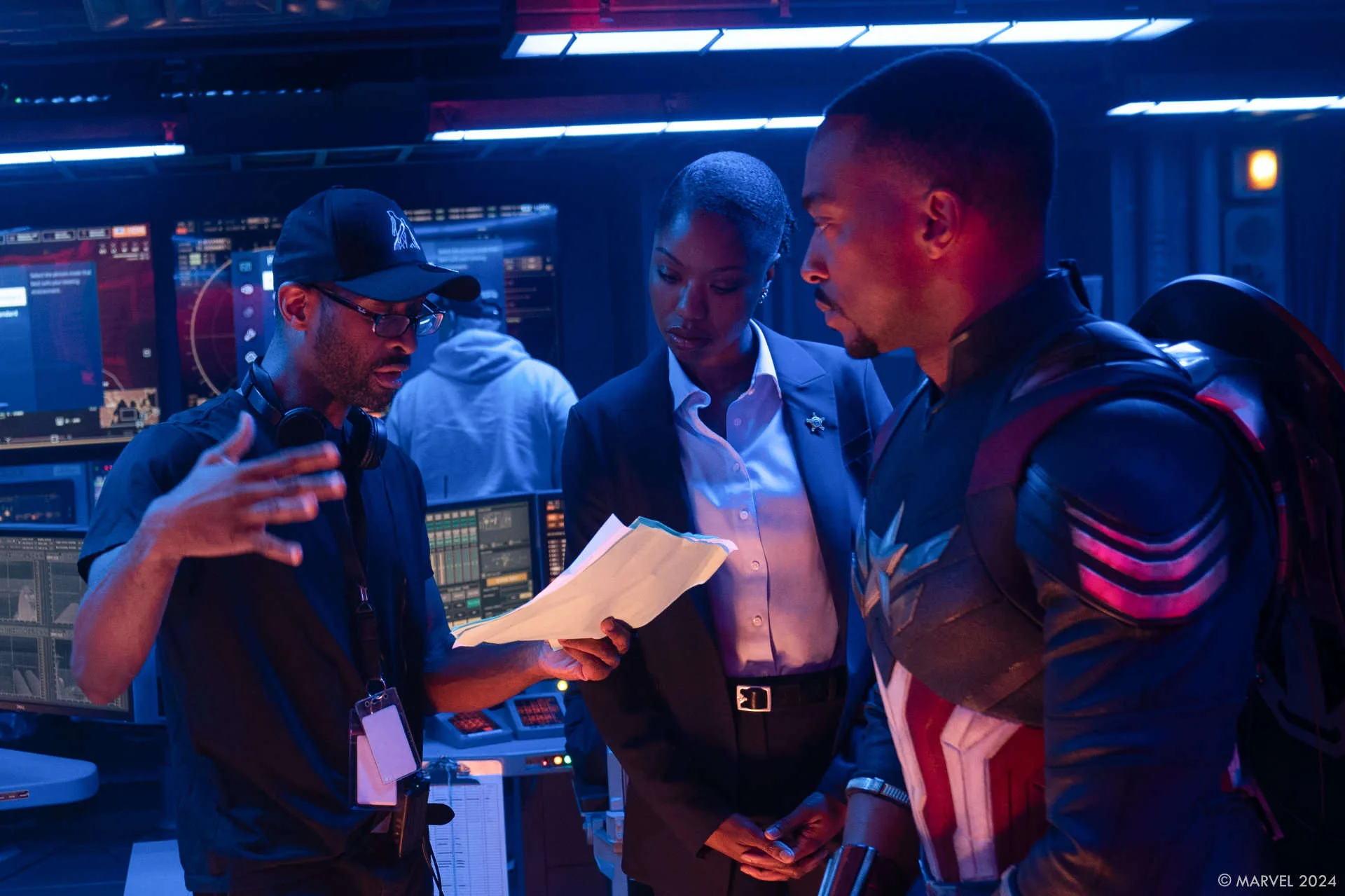
With so many studios collaborating on VFX-heavy films, how did you select the different VFX houses for this project? What unique strengths did each bring?
I was incredibly fortunate to be partnered with an amazing VFX Producer, Yasamin Ismaili, who had been on the film since its inception. She and Bill Westenhofer, my predecessor, had already mapped out a strategic plan for tackling the film’s biggest VFX challenges.
Weta FX took on everything Red Hulk-related, given their deep expertise in complex character animation and effects. Digital Domain (DD) handled the dogfight action sequence, leveraging their extensive experience with high-energy action. UPP was already on board as well, taking care of many of the film’s invisible effects and delivering stunning work on the White House sequence.
From there, Yas and I worked together to divide up the rest of the work efficiently, minimizing shared assets and shot dependencies. We brought in Barnstorm VFX, who did some incredible work, and Outpost VFX, who handled the film’s new opening, which required extensive face replacements. Luma Picutres was tasked with one of the most challenging creative and technical sequences—Stern, aka The Leader. The remaining work was split between Opsis, Crafty Apes, SDFX Studios, and two fantastic in-house compositors. Scanline VFX also contributed a really cool shot for the film.
For Previz, DD’s previz team, led by the incredible Cameron Ward, worked on the major action sequence, while Weta FX handled all the previs and postvis for Red Hulk, with Sidney Kombo-Kintombo leading as their fantastic Animation Supervisor. The Third Floor took care of most of the postvis for Additional Photography (AP).
On the graphics side, Cantina Creative delivered stunning screen graphics for the White House scenes, while Greg Herman, our in-house graphic designer, crafted the rest.
There was also some early work done by ILM before my time, though unfortunately, it didn’t make the final cut.
Lastly, I want to give a special mention to Marc D. Rienzo, who joined us toward the end as Additional VFX Supervisor and played a crucial role in getting us across the finish line.

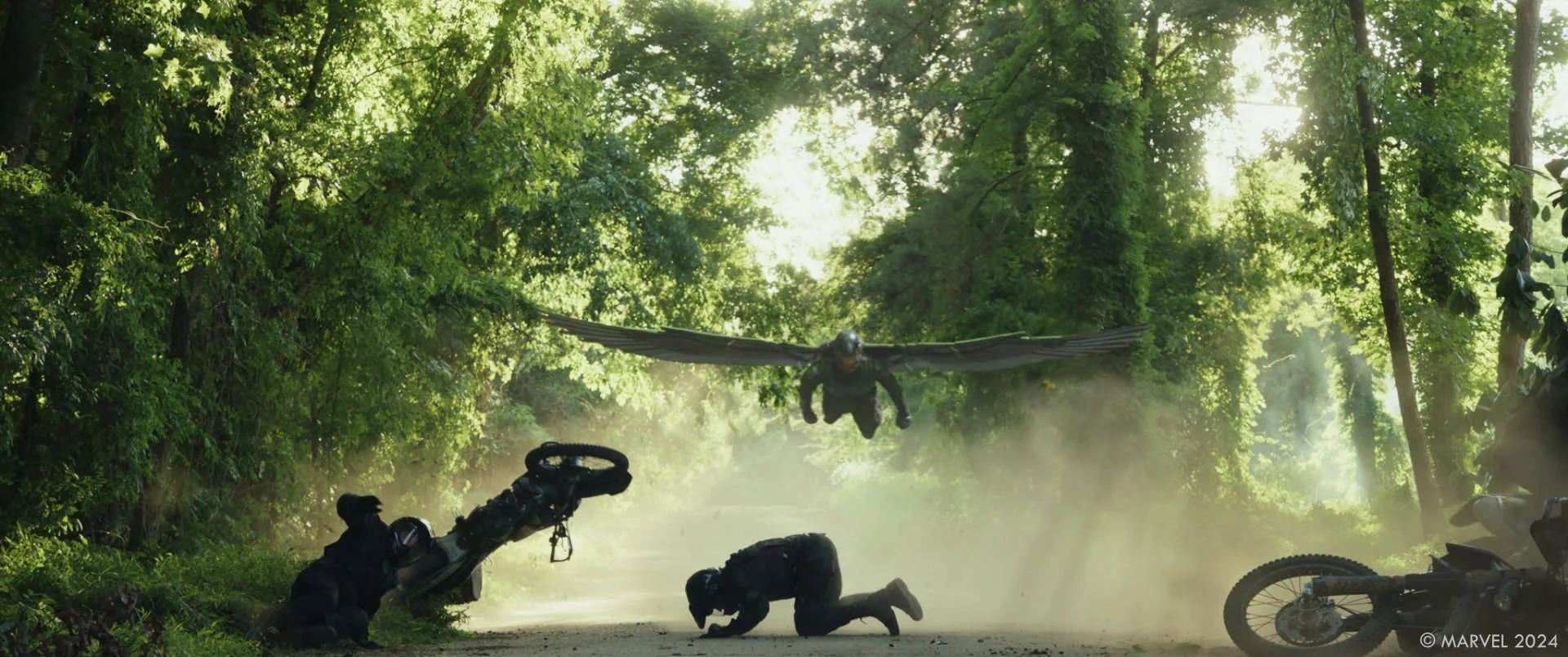
Can you share how you worked with the producer to balance creative vision with practical and budgetary constraints?
Yasamin had most of it already figured out—she’s incredible at what she does. Her meticulous planning allowed me to focus primarily on the creative aspects of the work without having to worry about shot breakdowns and budgeting, unless my input was needed. I couldn’t have asked for a better partner on the show. Thanks to her, I was able to stay focused on the creative vision while she ensured I had the support I needed to bring it to life.
What were the biggest challenges in designing and animating Captain America’s latest armor? How did you ensure it felt both practical and futuristic?
Both Sam and Joaquin’s suits were practical and designed by Marvel Studios’ VisDev team. Our job was to create their digital counterparts for full CG shots or digital takeovers. DD, supervised by Hanzhi Tang, built both suits and then shared the assets with Weta and Outpost to maintain consistency across vendors.
Sam’s wings were one of the biggest challenges. While they were first introduced in The Falcon and the Winter Soldier, their functionality in Brave New World required far more complexity. They had to bend, twist, and wrap around Sam in ways that made the rigging incredibly intricate. On top of that, we added a Vibranium energy effect, which was developed by Weta and then shared back with DD and Outpost to integrate seamlessly.
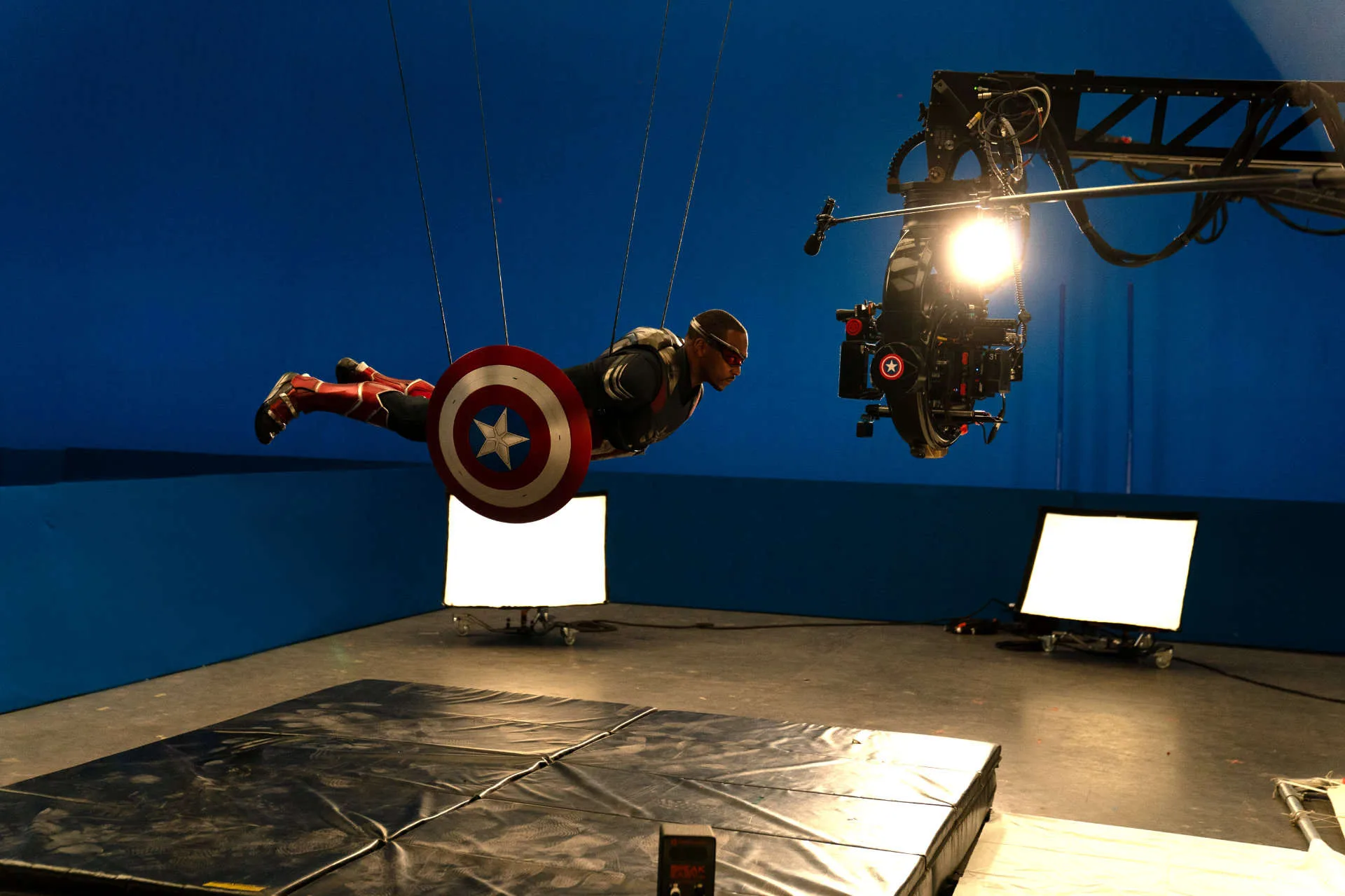

How did you balance photorealism with the comic-book aesthetic for Captain America’s movement and action sequences?
Finding the right balance between photorealism and a comic-book aesthetic was a long process, especially for the aerial sequences.
For the film’s opening, we shot practically, so aside from a few “special moves,” everything stayed fairly grounded. The same approach applied to the Rose Garden and Hains Point scenes—most of it was filmed practically, with either Anthony Mackie himself or a stunt double. Of course, there were some digital takeovers (or vice versa), but we really focused on keeping everything as human-like as possible—after all, Sam didn’t take the serum.
The aerial action sequence was a different story. Here, we embraced more creative freedom—after all, the scene had to look spectacular, and staying strictly within the laws of physics would have made that impossible. The entire sequence was choreographed in previs by Cameron and his team. One of the key constraints I gave them was to keep the camera work as realistic as possible—using hard-mounted setups, aerial photography, and long lenses from the ground—only breaking these rules for specific shots. The same principle applied to the performances.
It was definitely a challenge to make two humans flying at over 500 mph against four fighter jets feel believable, but I think we struck the right balance. Even the missile-surfing shot—while definitely impractical—went through countless iterations to find that sweet spot. We refined it again and again, first in previs and later in animation with Frankie Stellato and his team. I lost count of how many versions we went through, but in the end, I think we landed on something that feels just right.
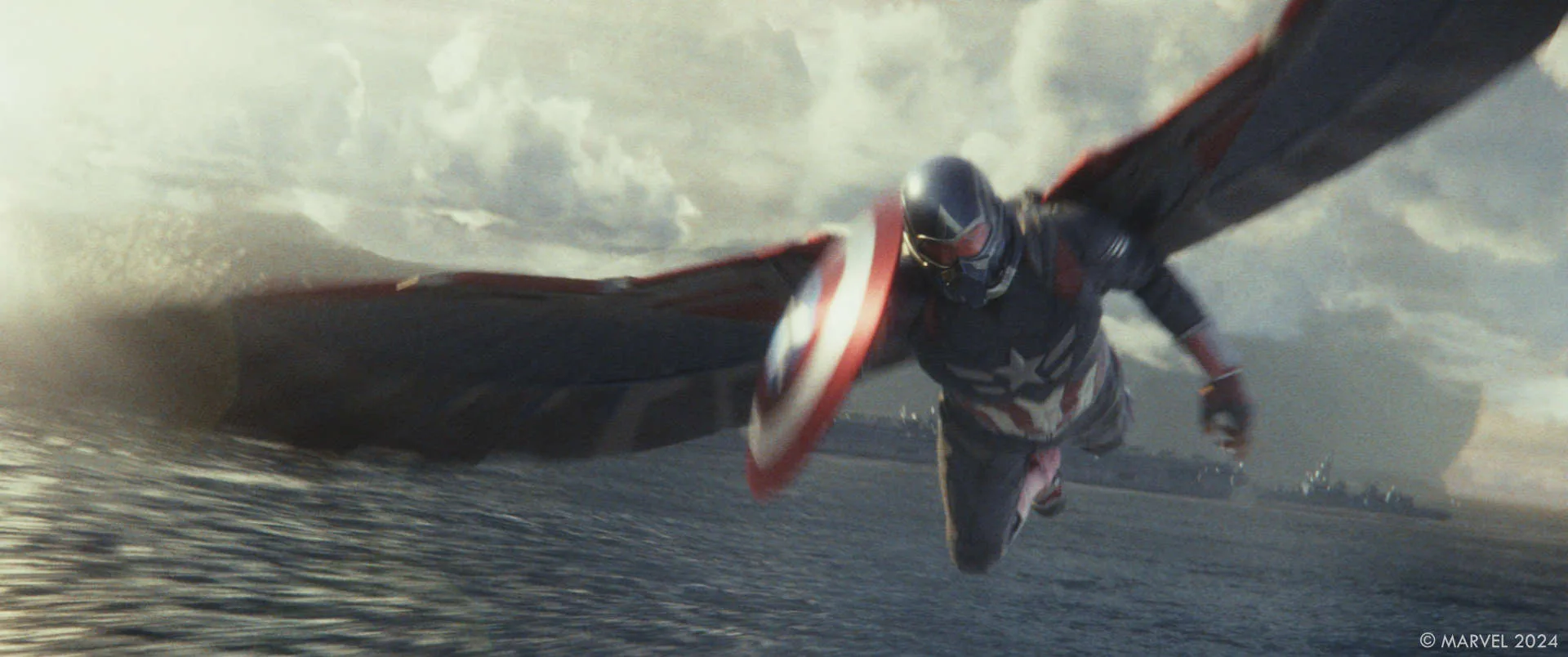
How did you approach close-up shots where Captain America transitions between practical and fully digital armor, ensuring seamless integration?
It really depended on the shot. For the big aerial sequence, I shot most of the close-ups with Anthony Mackie and Danny Ramirez on stage. They were in full suits, wearing their helmets without the visors. We meticulously planned each shot on paper beforehand, so on the day of the shoot, we knew exactly where the camera and key light needed to be.
Instead of using wires, they stood upright while looking up, since we knew their suits would ultimately be replaced with CG. Our main focus was capturing the best possible faceplates with natural shadows from the helmets, ensuring seamless integration later.
Of course, things evolved during post-production—some shots ended up becoming fully CG. But because we had prioritized proper lighting and composition during filming, the transition between practical and digital remained seamless.
The island formed by the Celestial Tiamut is one of the film’s most ambitious environments. How did you approach designing such a massive, otherworldly setting?
The Celestial Island asset was originally created for Eternals and had been part of our film’s concept long before I came on board. Since it’s the source of Adamantium—a key element driving the conflict between the U.S. and Japan—it was crucial to the story. The environment itself was massive and truly unique. In fact, for Brave New World, we had to scale it down to make staging the scenes more manageable—otherwise, the sheer size would have made it impossible to frame the action effectively.
That said, Tiamut’s presence worked to our advantage. Its distinct geography helped us maintain a consistent sense of orientation throughout the film, ensuring that even within such a vast and otherworldly setting, the audience could always follow the action.
The idea of an island “growing” around Tiamut was part of an early version of the film, but it eventually took on more of a secondary role. While a full build of the island exists, it was never heavily featured in the final movie.
As for Tiamut’s surface, in Eternals, it was transformed into a stone-like material, and that same appearance carries over into Brave New World. Since this look was already well-established, our focus was on maintaining consistency rather than redesigning it from scratch.
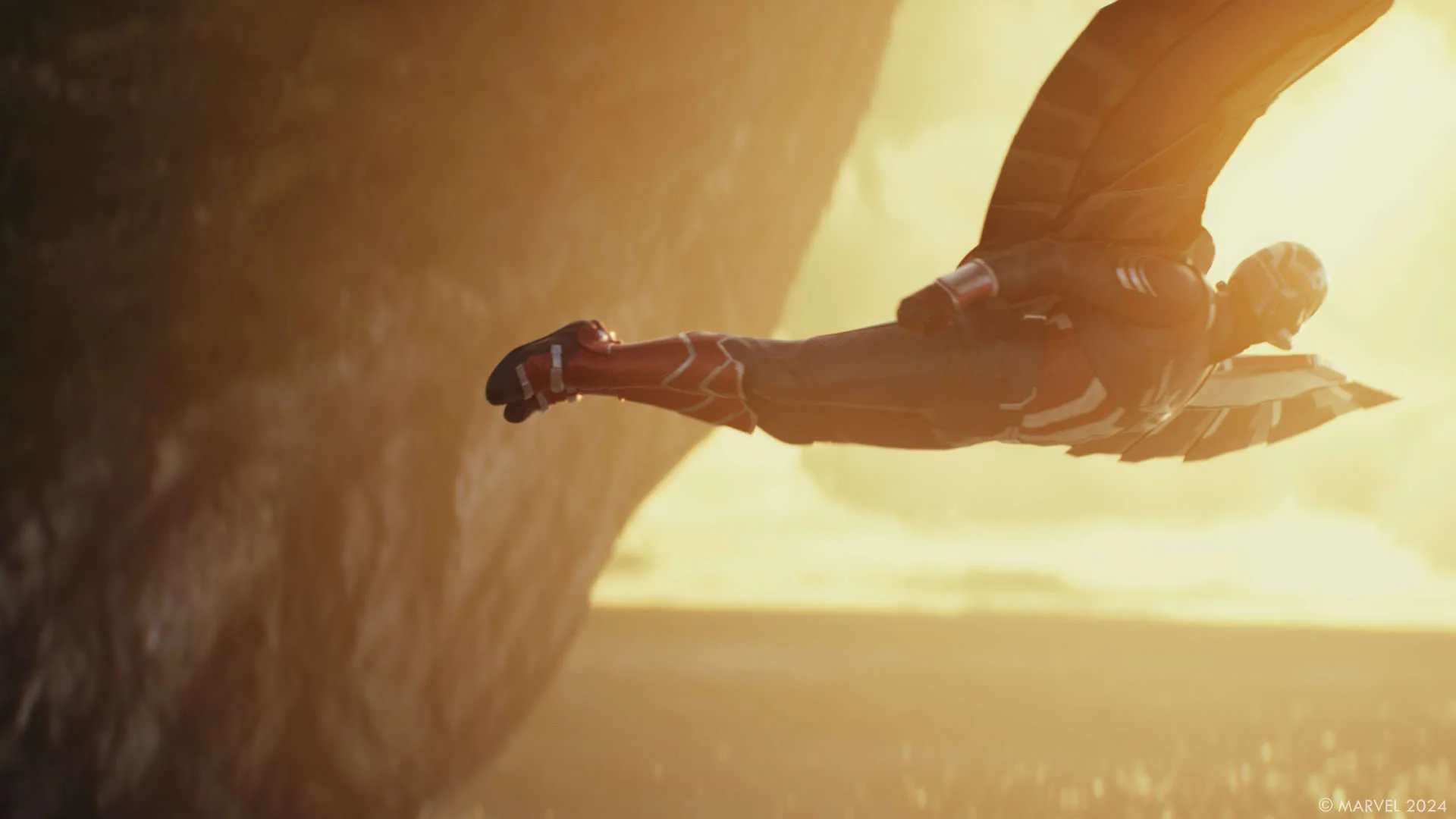
How did you handle lighting and atmospheric effects to enhance the island’s scale and its integration with live-action footage?
One of the advantages of this scene is that it’s 99% fully CG 🙂 which gave us full control over the environment—both in terms of lighting and atmospheric effects. Since we had a completed previs before shooting Additional Photography, we already had a clear idea of where the light should be in relation to our heroes and the fighter jet pilots.
That said, things evolved slightly in post—mostly in terms of color temperature. Originally, we aimed for an early-morning look, so we shot with a warmer key light. However, as the sequence developed, we shifted toward a more neutral tone. The warmer lighting was making the scene feel a bit too magical, which wasn’t the tone we wanted. As a result, the DD team had to color-correct the faceplates and cockpit shots to match this new direction.
This more neutral lighting also helped with realism, especially for the jets—particularly the F-35, whose minimal design and smooth surfaces make it tricky to light convincingly. Stronger key lighting helped define its shape and integrate it more naturally into the environment.
CG clouds played a crucial role as well. They reinforced Tiamut’s scale and added a greater sense of speed during the dogfight moments. While the cloud layout remained consistent throughout the sequence, we sometimes placed them manually to enhance visual composition or subtly guide the audience’s focus. Finally, we added wispy atmospheric elements in close-up shots to further sell the sense of speed—both for the jets and our heroes—making the action feel more dynamic and immersive.
What were the key creative discussions around the visual design of Red Hulk? Did you draw inspiration from any specific comics or other media?
The design of Red Hulk started with Marvel Studios’ VisDev department before I joined the project, so I’m not fully aware of their original sources of inspiration. However, from the very beginning, it was clear that he had to bear a strong resemblance to Harrison Ford. Once the design was approved, it was handed off to Dan Cox and his team at Weta FX, who began the sculpting process. One of Weta’s major contributions—beyond ensuring the anatomy and musculature were anatomically correct—was refining the likeness to Harrison Ford.
For instance, Red Hulk’s eyes are 100% Harrison’s, and his trademark chin scar was faithfully incorporated. His mouth shape, nose, lips, and eyebrows were also heavily adjusted to match Ford’s facial structure, including his natural asymmetry. These details played a crucial role in giving Red Hulk a distinct personality and, more importantly, ensuring that Harrison’s facial performance translated effectively onto the character.
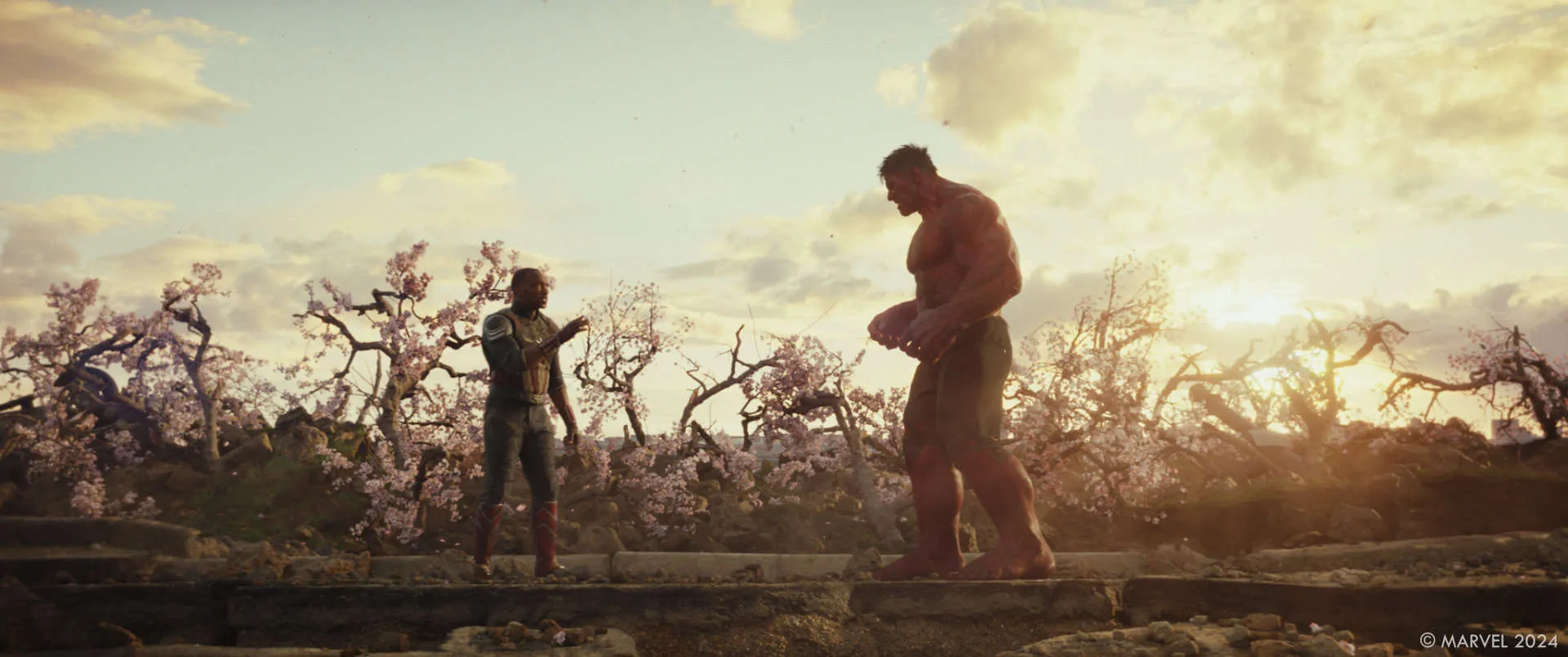
Red Hulk’s transformation scenes are typically dramatic and intense. How did you tackle these sequences to ensure they felt powerful yet grounded?
For Julius, everything in the film had to feel as grounded as possible, and Red Hulk’s transformation was no exception. One of our early inspirations for this sequence was the iconic transformation scene in An American Werewolf in London—so much so that some shots in the original previs were direct homages to that moment.
Our Red Hulk asset was actually built with the ability to fully transform from Harrison Ford’s body to RH directly in-camera, capturing a raw and visceral brutality. However, as things evolved in post-production, the decision was made to keep the transformation more mysterious—less gory and mostly off-camera.
That said, we still kept the original concept in mind while crafting the final shots, ensuring that even with a more restrained approach, the transformation retained its intensity. So I’d say we did a pretty good job! 🙂

What advancements in muscle simulation, skin shading, or facial animation were applied to achieve Red Hulk’s realism and expressive range?
Creating Red Hulk’s anatomy and muscle behavior was an evolution of W?t? FX’s previous techniques. They captured high-quality body reference, modeled a new high-resolution muscle system, and transitioned to an improved simulation engine. Additionally, they developed a complex multi-layered approach to muscle activation and introduced a new method for adding fine details to the skin.
To ensure realism, Weta’s Animation, Models, Creatures, and Look Development teams studied a bodybuilder as a key reference. They analyzed his range of motion and how his muscle mass moved and interacted with his skin, helping to ground Red Hulk’s proportions and movement in reality.
For facial animation, a combination of keyframing and facial capture from Harrison Ford’s performance was used to maintain authenticity. Every effort was made to hand-animate Red Hulk’s expressions to match specific emotional beats, ensuring that his performance felt unmistakably Harrison.
The ultimate goal was to make sure the audience could truly see Harrison Ford behind Red Hulk’s face—and I think we achieved that.
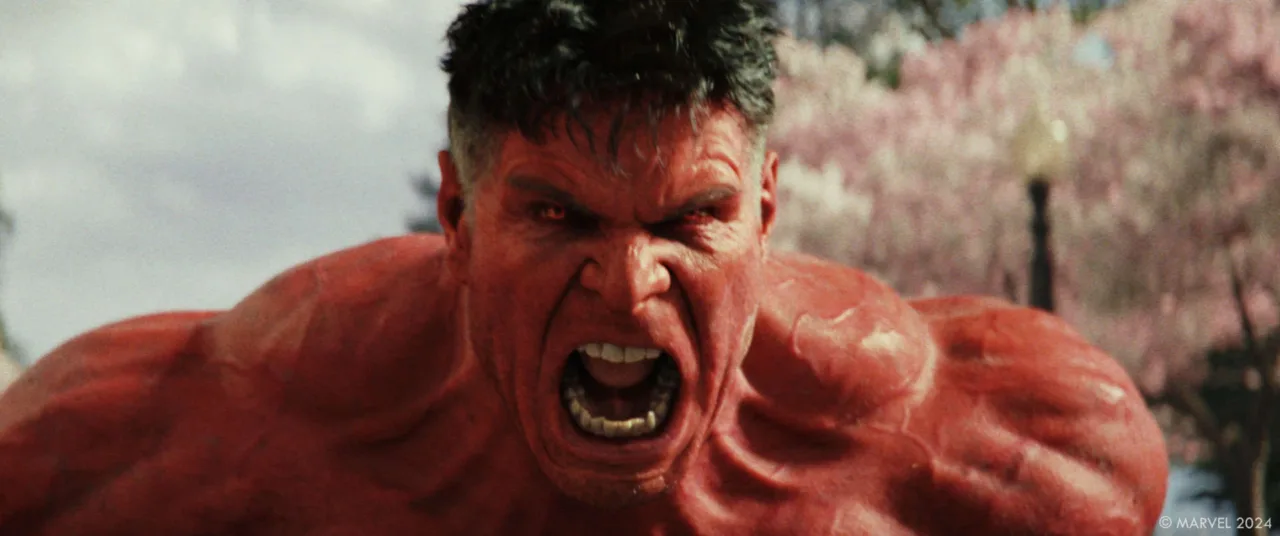
Were there any unexpected technical or creative challenges encountered during the production?
One of the things I love about this job is its unpredictability. On a film of this scale, you always have to be ready for things not to go as planned—whether during the shoot or in post. That’s where having a strong team makes all the difference. Ultimately, our biggest challenge is always time. It constantly pushes us to think on our feet and find creative solutions to unexpected obstacles.
That said, this film was an incredible experience. Working with such talented people—both on the production side and with our VFX partners—made it truly memorable. Challenges are what keep us sharp, and each one is an opportunity to grow and get better at what we do.
Were there any memorable moments or scenes from the film that you found particularly rewarding or challenging to work on from a visual effects standpoint?
We always get asked this question, and my answer is always the same: Choosing a favorite scene or shot is like choosing a favorite child—I just can’t! 🙂
That said, there’s so much great work in this movie that doesn’t always get the recognition it deserves. Luma Pictures did an exceptional job on Stern, and the invisible effects from UPP and Barnstorm were so seamlessly executed that they go completely unnoticed—which, in a way, is the ultimate compliment for that kind of work.
Keep an eye out for their VFX reels when they’re released—they deserve all the love!
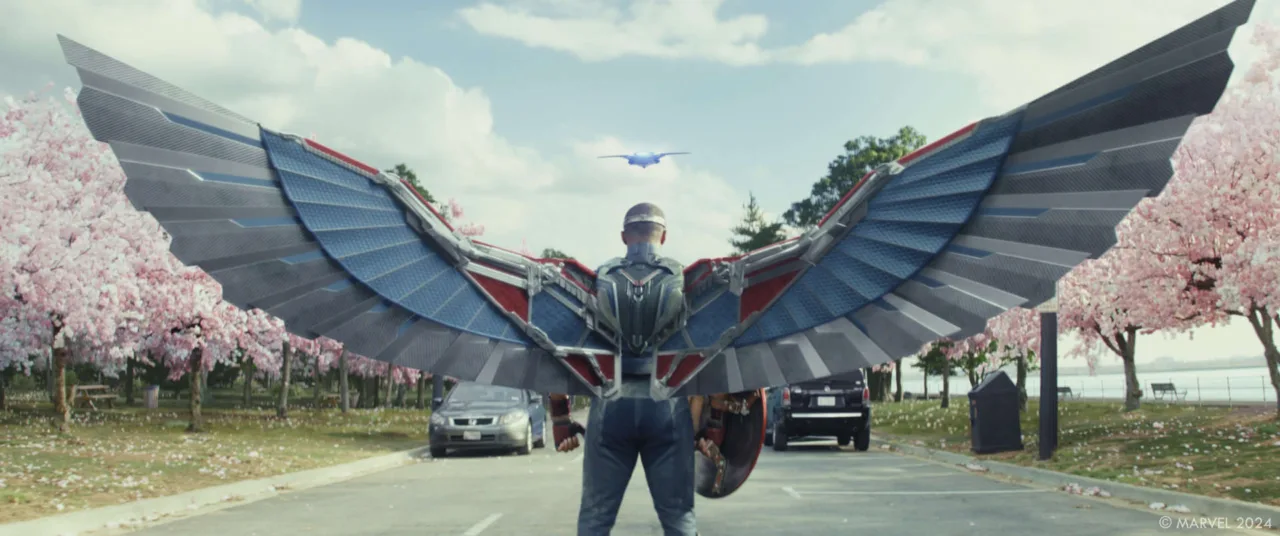
How long have you worked on this show?
Exactly 1 year.
What’s the VFX shots count?
Around 1300.
What is your next project?
Can’t say it yet…
A big thanks for your time.
WANT TO KNOW MORE?
Digital Domain: Dedicated page about Captain America: Brave New World on Digital Domain website.
Outpost VFX: Dedicated page about Captain America: Brave New World on Outpost VFX website.
UPP: Dedicated page about Captain America: Brave New World on UPP website.
Weta FX: Dedicated page about Captain America: Brave New World on Weta FX website.
© Vincent Frei – The Art of VFX – 2025




